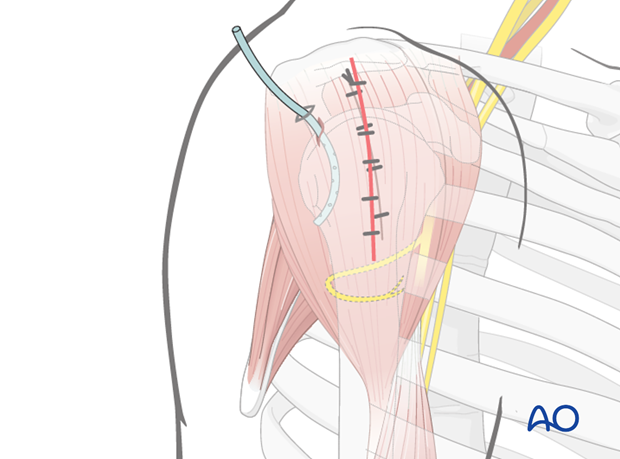Transdeltoid lateral approach to the proximal humerus
1. Indications
The transdeltoid lateral approach can be used for various treatments of the proximal humeral fractures.
It is especially useful for osteosynthesis of fractures of the greater tuberosity.
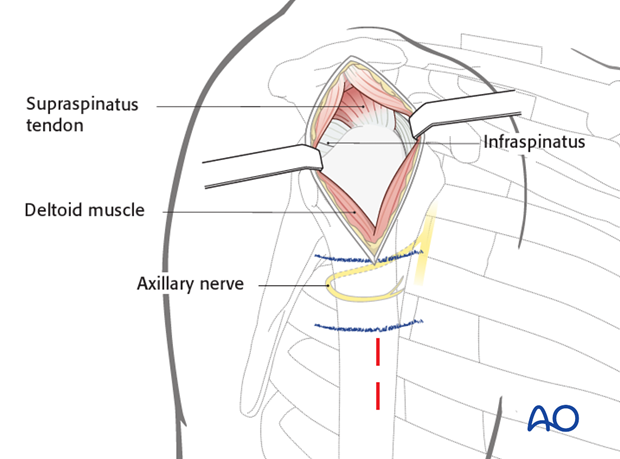
This incision is placed between the acromial part (2) and the spinal part (3) of the deltoid muscle, as illustrated.
Depending on the fracture morphology and foreseen osteosynthesis the extensions of the skin incision may vary but may not extend more than 5 cm distally to the acromion, to protect the axillary nerve.
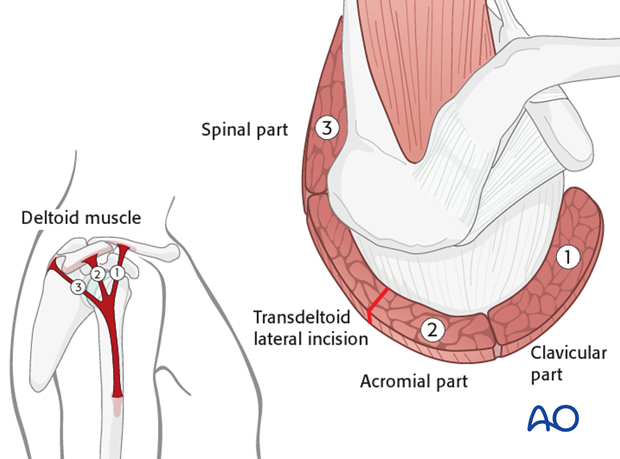
2. Anatomy
Neurovascular structures
The course of the axillary nerve must be kept in mind.
Note: The anterior motor branch of the axillary nerve crosses the humerus horizontally about 6 cm distal to the lateral border of the acromion. This distance does not significantly vary and is reliable.
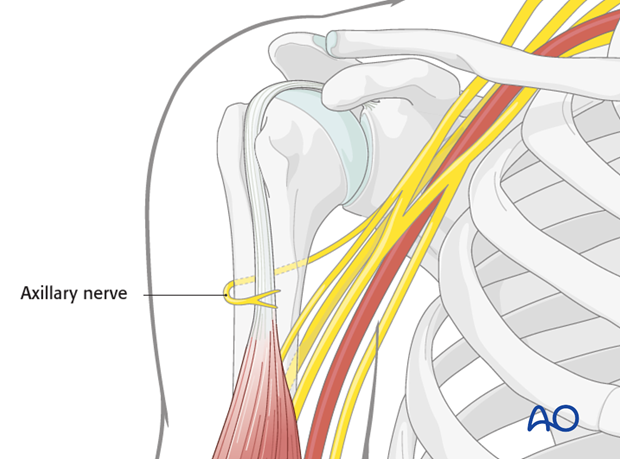
This approach utilizes a relatively avascular plane, away from the anterior and posterior circumflex humeral arteries.
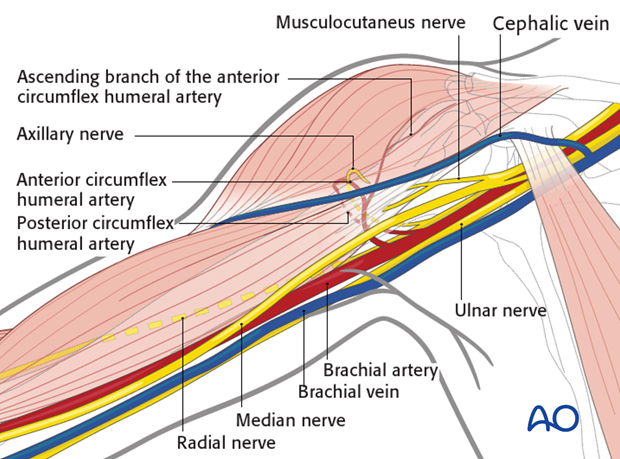
3. Skin incision
Anatomical landmarks
Anatomical landmarks for the transdeltoid lateral approach are:
A) Lateral border of the acromion
B) Lateral side of the proximal humeral shaft
Both landmarks can easily be palpated.
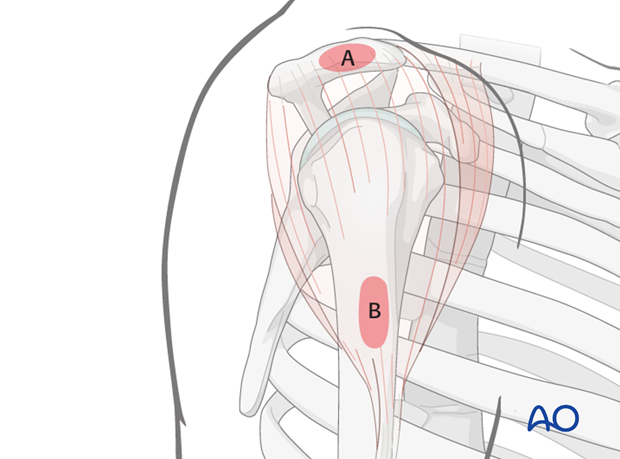
Axillary nerve
Before incising the skin, mark the distal limit of the approach, 5cm below the acromion, which is 1 cm above the course of the axillary nerve.
If a plate is to be passed underneath the axillary nerve, as in minimally invasive plate osteosynthesis (MIPO), mark a second line 2 cm distal to the first, below which the axillary nerve should not be encountered. The space between these two lines is the danger zone on the lateral humerus.
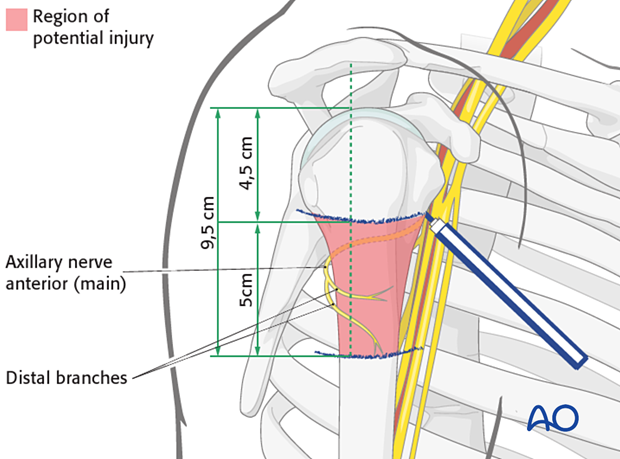
Skin incision
Make a skin incision from the lateral border of the acromion 5 cm distally, parallel to the axis of the humerus.
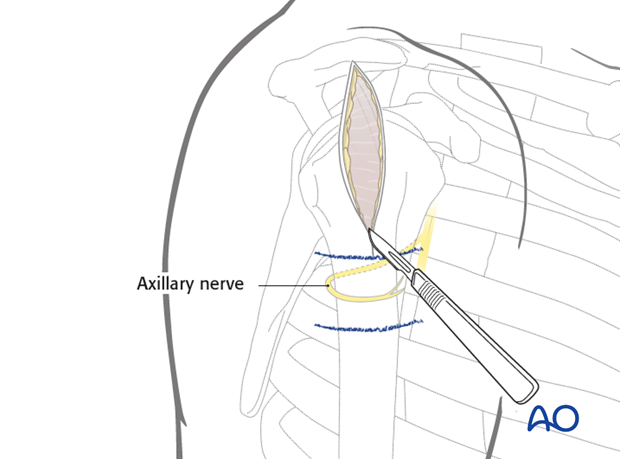
4. Exposure of the middle third part of the deltoid muscle
Expose the middle third (acromial) part of the deltoid muscle and split the muscle between its fibers.
For maximum exposure, split the deltoid up to the margin of the acromion, but do not split it distally more than 5 cm from its origin to avoid damaging the axillary nerve and paralyzing the anterior part of the deltoid.
Palpate the axillary nerve on the deep surface of the deltoid muscle, distal to the incision. This nerve encircles the proximal humerus a little less than half way from the lateral margin of the acromion to the insertion of the deltoid muscle.
Hemorrhagic subdeltoid bursal tissue may need to be excised to expose the humeral head.
Pearl: stay suture
In order to protect the axillary nerve from uncontrolled distal dissection, a stay suture may be placed at the inferior border of the deltoid split.
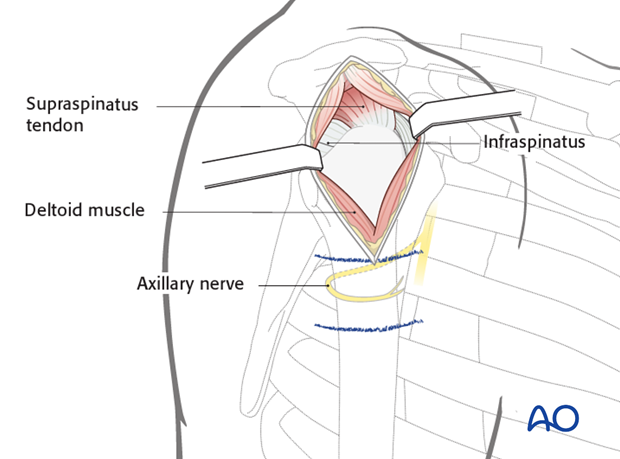
5. Additional stab incision for minimally invasive plate osteosynthesis (MIPO)
Safely below the marked (blue lines) axillary nerve, stab incisions may be made for screws to fix a plate to the humeral shaft. A special aiming device may be available for this purpose.

6. Wound closure
After surgery irrigate the wound. Some surgeons place a drain beneath the deltoid muscle.
Close the deltoid fascia, the subcutaneous tissues and the skin.
